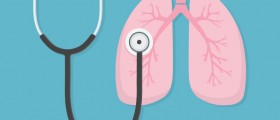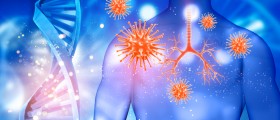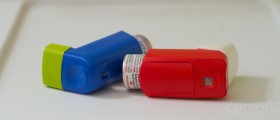
Dry Drowning General InformationDry drowning refers to inability of the lungs to extract oxygen from inhaled air. The condition commonly occurs as an after effect of a small amount of water in the lungs. Dry drowning leads to respiratory arrest and brain death as a result of insufficient supply of oxygen-rich blood. Dry drowning usually affects children, when they ingest water while swimming or playing with water. Children and infants with lung problems are especially at the risk of dry drowning. This includes asthma, pneumonia, acute respiratory distress syndrome (ARDS) and underdeveloped lungs. The condition may occur due to high diving, water boarding or any other forceful contact with water. Damage to the respiratory system, severe trauma to the chest or diaphragm, muscular paralysis and prolonged exposure to a gas other than oxygen can also result in dry drowning.
Dry drowning results from persistent laryngospasm. Laryngospasm is a condition where one feels as his or her throat has closed up and cannot catch breath. Laryngospasm usually lasts between 30 and 60 seconds, when airflow in the lungs is blocked. This takes place because the laryngeal cords tend to constrict in the presence of fluid, thus preventing it to enter the lungs. Dry drowning occurs due to laryngospasm that does not allow water to reach the lungs while at the same no air enters either. Still, the heart continues to pump the blood, which results in accumulation of small amount of blood in the lungs. Therefore, a person can drown in his or her own fluids or dye due to a continued lack of oxygen in the brain (hypoxia).
Symptoms of Dry DrowningIt is important to learn how to recognize symptoms of dry drowning, particularly in children, because the condition should be treated at the initial stage to avoid the fatal outcome.
Persistent Coughing
When children inhale water, they react by coughing, crying and eye rubbing. However, if the cough continues for about 20 to 30 minutes, it can indicate the presence of water in the lungs.
Difficulty in Breathing and Chest PainA child that exhibits difficulty in breathing after swimming or experiences pain in the chest should be instantly taken to a doctor, because these symptoms may indicate water in the lungs.
Lethargy and Confusion
If you observe unusual lack of energy in a child after swimming, you should take it seriously because it can indicate accidental water ingestion and the beginning of dry drowning. Also, confusion, sudden change in mood and difficulty in deciphering can be signs of water in lungs.








-And-Breathing-Problems_f_280x120.jpg)








Your thoughts on this
Loading...